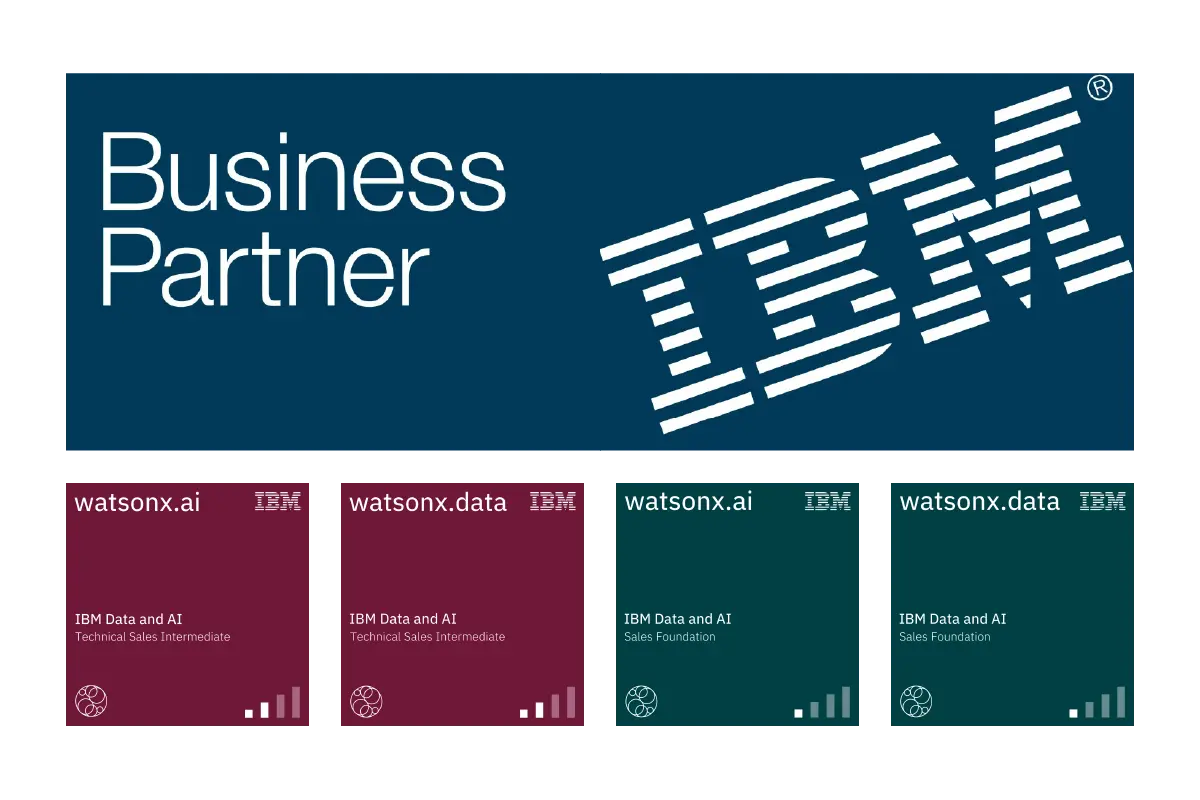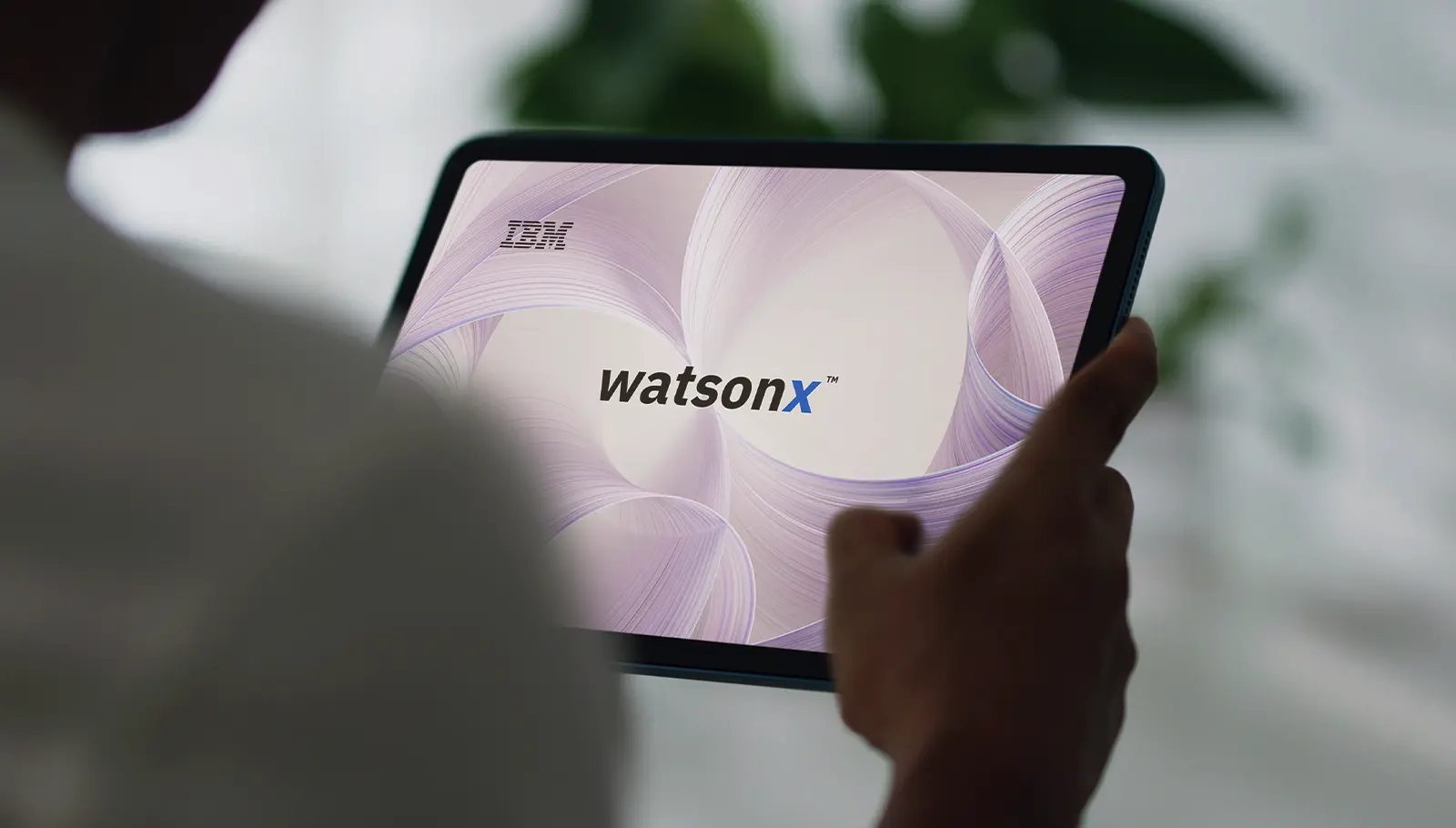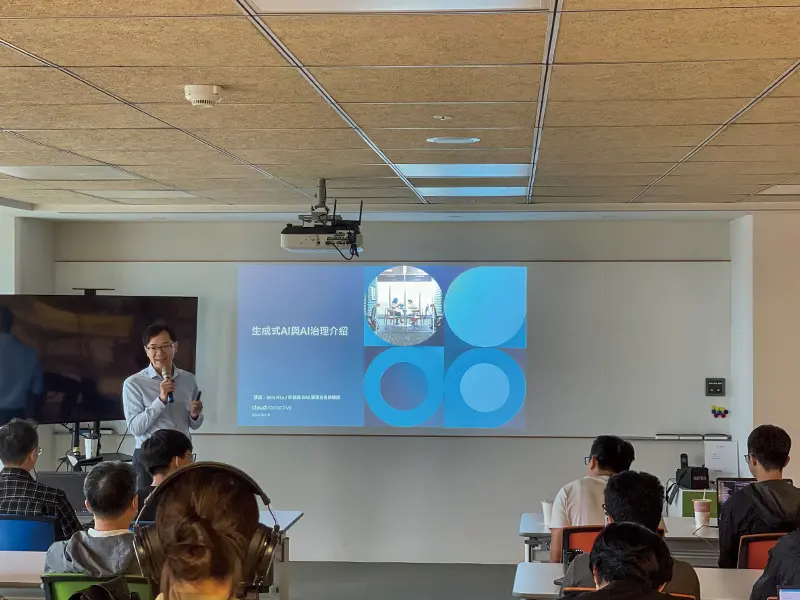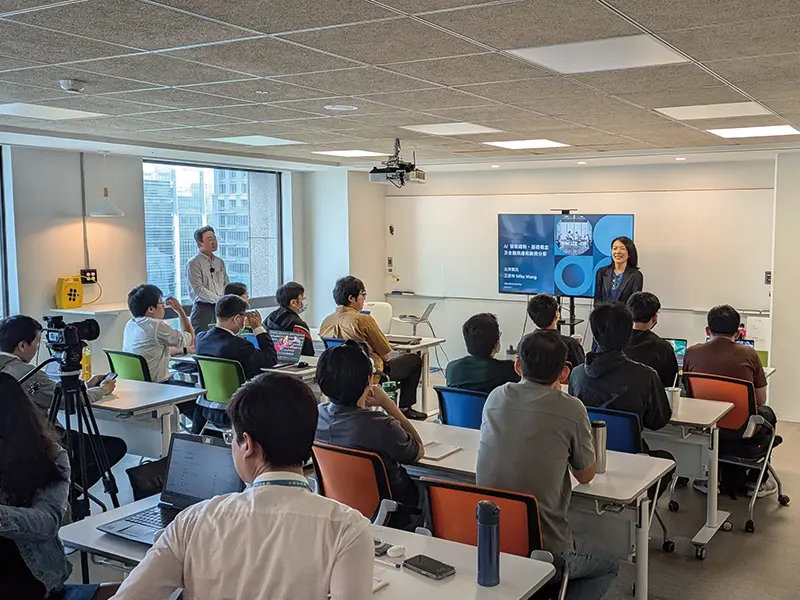IBM Watsonx: Your Enterprise AI Solution
Your Trusted Partner for Comprehensive AI, Data, and Governance
Your Trusted Partner in AI Transformation
As an IBM Certified Business Partner, we deliver comprehensive AI services tailored to your business needs. Our deep technical expertise and industry experience enable us to provide end-to-end services, from strategic consulting to implementation and maintenance.

Extensive Project Experience
End-to-end Service
Technical Excellence
Local Support
Our Services for Watsonx
Strategic Consulting
System Implementation
AI Model Optimization
Support and Maintenance
What Solutions Can IBM Watsonx Provide for Your Business?

- Flexible Model Library: Powered by various foundation models and traditional machine learning (ML) to build custom AI applications.
- Prompt Lab: Ready-to-use NLP templates to interact with language models seamlessly.
- Fine-Tuning Studio: An efficient, low-cost way of adapting foundation models with labeled data to improve performance and accuracy.
- Secure, Collaborative Environment: Ensures every step of modeling, testing, and deployment is secure.
- Fit-For-Purpose Query Engines: Select the best option based on your tasks.
- Shared, Open Formats: Allow multiple query engines to access a single copy of your data, wherever it resides, across a hybrid cloud.
- Smart Data Steward: Tracks data lineage and performs quality checks for accuracy.
- Hybrid Cloud Deployment with Flexible On-demand Storage: Prevents data loss and ensures smooth and cost-effective operations.
- Comprehensive AI Lifecycle Governance: Manage, monitor, and govern AI models from different suppliers.
- Quality and Risk Management: Actively monitor AI models and provide documentation of model metadata with factsheet in model decisions.
- Powerful Compliance Management: Quickly adapt to international regulations with customized adjustments.
- Full transparency and enhanced collaboration: Automate workflows and records on AI model development, including approvals, training data sources, and more.
Why Choose Watsonx for Your Business?
Scalability at
Its Best
Watsonx supports large-scale AI deployments, making it ideal for expanding businesses across industries.
Tailor-Made AI Models
Build custom AI models specifically designed to meet your industry needs and streamline operations.
Compliance and Security
With a strong focus on AI governance, Watsonx ensures transparency, fairness, and full legal compliance in all AI systems.
Cost-Effective Solutions
Watsonx automates processes and leverages predictive analytics to optimize business operations and reduce costs.
Popular AI Platforms
Key Features
Enterprize-grade solutions, data governance, and scalability.
A versatile and conversational AI platform. Suitable general daily tasks.
Strength
Application Scenarios
Integration and Customization
Extensive
Limited customization.
Limited customization.
AI Implementation in Enterprises: Key Applications Across Departments
- Talent Recruitment: Utilise AI models to scan and evaluate resumes, matching and ranking candidates with positions to help reduce bias in the hiring process.
- Employee Retention and Engagement: Analyze employee engagement data to predict turnover rates and recommend retention strategies.
- Training and Development: Create personalized learning experiences based on individual employee skills and career plans.
- Performance Management: Streamline the performance evaluation process, providing more accurate insights and improvement suggestions for employee performance.
- Sales Forecasting: Analyze historical sales data, market trends, and customer behavior to predict future sales performance.
- Lead Scoring: Assess potential customers based on interaction data and engagement patterns, prioritizing high-potential leads.
- Personalized Customer Engagement: Recommend tailored sales strategies and relevant offers to attract customers.
- CRM Automation: Utilize chatbots to automate customer interactions while managing and tracking customer data.
- Customer Segmentation: Analyze demographic, behavioral, and purchasing data to enable targeted marketing efforts.
- Personalized Content: Send tailored marketing messages based on customer preferences and historical data.
- Campaign Optimization: Utilize real-time data to optimize marketing campaigns, adjusting ad placements, budget allocations, and audience targeting.
- Sentiment Analysis: Monitor social media platforms and customer feedback to analyze customer sentiments and make real-time adjustments to marketing strategies.
- Financial Forecasting: Analyze historical financial data, market trends, and economic indicators to build predictive models for revenue forecasting, budgeting, and financial planning.
- Expense Management: Identify spending patterns and recommend cost-saving measures to enhance overall financial efficiency.
- Fraud Detection: Monitor financial transactions in real-time to detect anomalies and prevent fraudulent activities.
- Automated Reporting: Streamline reporting processes to ensure accuracy in financial statements.
- Inventory Optimization: Predict demand to maintain optimal inventory levels, reducing stockouts and excess stock issues.
- Supply Chain Forecasting: Aid in forecasting demand and supply chain conditions, allowing for timely adjustments to procurement strategies and ensuring smooth operations.
- Logistics Optimization: Optimize transportation routes and fleet operations by analyzing real-time logistics data to reduce transportation time and costs.
- Workflow Automation: Automate routine tasks, such as order tracking and reporting, to minimize human errors and enhance efficiency.
- Cybersecurity: Detect security vulnerabilities, anomalies, and threats in real-time to prevent cyberattacks and data breaches.
- IT Operations Management: Analyze system performance data to predict disruptions, monitor network activities, and optimize uptime through automated tasks.
- Automated Service Desk: Utilize chatbots to provide IT support, resolving common issues such as password resets or system troubleshooting.
- Data Management: Assist in managing and analyzing large datasets while facilitating data backup and recovery.
- Chatbots and Virtual Assistants: Customer service bots can address common inquiries. AI solutions enhance interaction quality through Natural Language Understanding (NLU).
- Sentiment and Feedback Analysis: Analyze customer feedback to help companies improve products and services.
- Ticket Management: Prioritize and assign tickets based on urgency to ensure timely problem resolution and increase customer satisfaction.
- Predictive Analytics for Customer Behavior: Anticipate customer needs and behaviors, enabling support teams to address issues proactively.
- Market Research: Analyze market trends, customer reviews, and competitor strategies to identify opportunities for product development.
- Product Optimization: Examine product data to uncover customer characteristics, leading to more targeted product development.
- Accelerated Innovation: Simulate design and engineering processes, allowing R&D teams to test ideas quickly.
- Data-Driven Prototyping: Predict the impact of design changes to reduce prototyping time and costs.
- Contract Management: Automate the review and management of contracts, identifying key terms, conditions, and potential risks to expedite the legal review process.
- Compliance Monitoring: Continuously monitor regulatory changes to ensure operations, documentation, and processes comply with legal requirements.
- Document Review: Filter legal documents, extract critical information, and identify potential risks while suggesting modifications.
- Litigation Risk Analysis: Analyze data and relevant legal precedents to help predict litigation outcomes and assess associated risks.
- Business Intelligence: Aggregate and analyze data for strategic planning, such as entering new markets, expanding products, or making investments.
- Scenario Modeling: Simulate business scenarios and potential outcomes based on market conditions to inform decisions related to mergers or restructuring.
- Performance Monitoring: Utilize KPI analysis for real-time performance tracking, identifying areas for improvement.
- Growth Forecasting: Predict future trends, customer demands, and market changes to make data-driven decisions.
- Supplier Evaluation: Analyze supplier performance, pricing trends, and reliability to aid procurement teams in decision-making.
- Spend Analysis: Identify cost-saving opportunities, prevent procurement fraud, and optimize procurement processes.
- Support Contract Negotiation: Analyze past contracts and market trends to identify favorable terms and negotiation strategies, enhancing procurement efficiency.
- Risk Management: Assess supplier data and market conditions to identify risks within the supply chain.
Book A Workshop With Us
Want to hop on the AI trend but don’t know where to start? We deliver a workshop guided by the Design Thinking Process, we will assess your business processes and challenges to advise you on the most suited approach.



